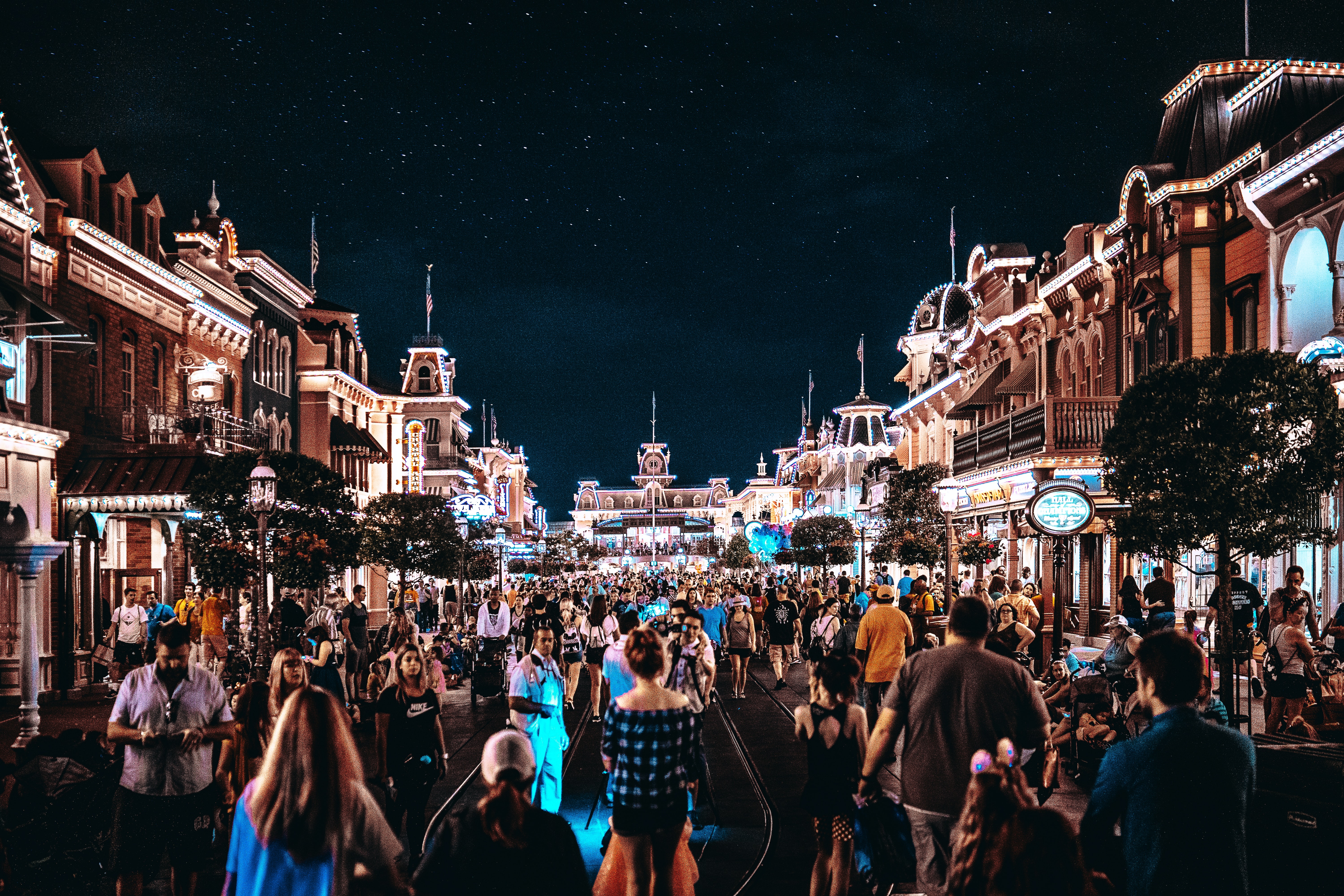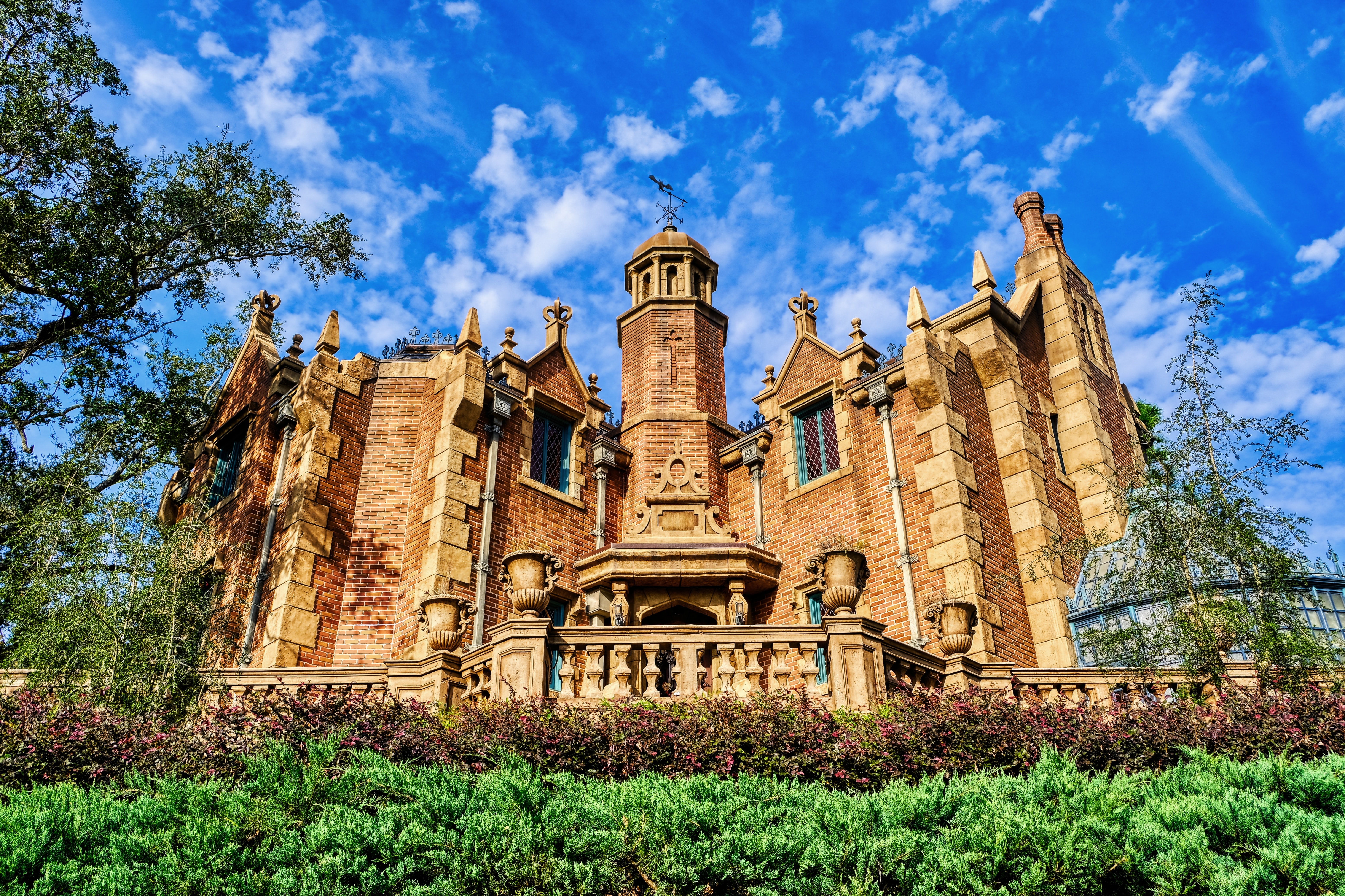“Where am I going to put my earring?” my mom asks, removing it to insert her earpiece.
“I can think of one place,” says my dad, taking it from her.
I’m at “The Most Magical Place on Earth” with my parents, about to go on a behind-the-scenes Keys to the Kingdom tour, and we’ve just been handed earpieces so we can hear our assigned Cast Member over the din of the crowds.
We’ve visited Walt Disney World Resort’s Magic Kingdom in Orlando, Fla., several times over the years and, considering ourselves Disney pros, wanted to try something a little different this time around. So, when I read that the five-hour tour “highlights the fascinating history of Walt Disney World Resort and provides backstage access to secret areas of [the] Magic Kingdom theme park,” I booked it. The Magic Kingdom (MK) conjures up images of wide-eyed children at Cinderella’s Castle, but the park is entertaining for adults, too. The tour, offered to guests 16 and up, is one of the few things at the park that’s not for kids.
M
eet me down on Main Street
The day begins at 9 a.m. in the 1900s-style City Hall on Main Street U.S.A. We’re introduced to our guide, Claire from St. Louis (a retiree dressed in a blue “costume” and cap), and the rest of our small group, which consists mostly of older couples.
Main Street acts as the antechamber of the MK. Guests must walk along it to enter or exit the park, either rushing to the rides beyond Cinderella’s towering castle—it’s actually only 63 metres tall, but forced perspective makes it appear taller—or wobbling out after a long day. Thankfully, that forced perspective also causes the street to appear shorter on the way out.

Main Street is lined with gas lamps, pastel-coloured shops, bakeries, restaurants and even a working barbershop. Throughout the day, horse-drawn carriages clop down the street past the occasional barbershop quartet, and the smell of buttered popcorn is everywhere. “How much did Walt pay for Magic Kingdom’s land?” Claire asks. “One-point-five million,” a man in the group answers. Claire doesn’t “officially” confirm the price but hands him a Mickey sticker and asks another question, then another.
“Why didn’t Disney reveal his intentions to build the park when he bought the land? Black Donna?” Claire has given my mom this name because she is one of two Donnas on the tour and is wearing a black shirt.
Black Donna doesn’t know the answer, so Claire explains that Disney used dummy companies like Ayefour Corporation (named after the nearby Interstate 4) for fear that landowners would jack up the price if they discovered he was the buyer. They discovered it anyway, and the price went from US$180 to US$80,000 per acre. Nevertheless, the names of the dummy companies are now immortalized on the windows along Main Street.
If MK were a movie, Main Street U.S.A. would act as its opening credits.
I
nto the jungle
Main Street’s piano sounds are replaced with that of conga drums as we cross over some wooden planks (Claire calls them a “sensory tickle”) and make our way into the thick brush of Adventureland. As a group, we board our own tramp steamer and are soon drifting by animatronic snakes, hippos, a rhino forcing men up a tree (the bottom man’s face can also be seen at the Haunted Mansion) and playful elephants squirting water. The animals are activated by motion, triggered when the boats reach a certain point on the tracks, so the Cast Member “driving” our vessel really only needs to focus on making cracks like, “People take these rocks for granite.”
When we glide past the aforementioned boulders into the Cambodian ruins, Claire points out “Hidden Minnies” (as in Minnie Mouses) etched on the cavern’s walls.
Though the ride is designed to evoke 1930s imperialism in South America, Asia and Africa, there are discrepancies—including some not-so-exotic plants and a chanting tribesman who proclaims his love for disco.
C
ape Cod cookery
Back on dry land, Adventureland fades into the log cabins and Old West facades of Frontierland, but we don’t explore much of its “onstage,” or public, area. Instead, we cross the train tracks that run alongside Splash Mountain as a train clanks by behind us. “Wave,” says Claire. “People on trains will wave at anyone.”
Across a yellow line drawn on the ground is the backstage area, not visible from anywhere in the park. And what lies beyond that line is a secret to all but those who take the tour. What I can reveal is that Splash Mountain uses a whole lot of water for that 17-metre flume drop, guests are never more than 30 steps away from a garbage can in the MK and certain parade floats contain hidden Walts.
As we walk out of backstage and head to lunch in Liberty Square, Claire asks us another question: “Why do you think Cast Members have to be a specific height to play certain characters?”
“So the princes will be taller than the princesses?” I offer. “That’s a valid answer,” says Claire. “But it’s actually for continuity.” Children might notice if one Ariel towers at six feet while another is barely five, she explains.
I still get a sticker.
When we reach the New England-style Columbia Harbour House in Liberty Square, we climb up to the second floor where a cordoned-off, air-conditioned section of the restaurant awaits, removed from the bustle below.
I eat lunch with my parents and Claire. We chat about how she became involved with the park, and it’s clear this isn’t just a job for her. Her eyes shine when she talks about Walt; Disney is definitely not just for kids.
K
ingdom come

The Haunted Mansion. The first time I saw the Spanish moss-covered, Gothic revival-style building, I was six years old. I walked past the invisible horse—affectionately nicknamed “Old Glue”—and the black hearse it pulled. I made it past the graveyard to the door of the mansion when a lanky Cast Member dressed in an old-fashioned suit and long face told me he would “be back for me soon.”
He may have come back for me, but I wasn’t there. I fled. My parents eventually convinced me he was an actor, so I braved the ride. Twenty years later, I learn a few other secrets. Look at the top of the building. One of the Mansion’s Imagineers loved chess, so his co-workers placed game pieces (minus the knight) on top of the building model as a joke. He liked it so much, the mansion’s turrets were constructed as such.
After we board the “doom buggies,” the black Omnimover vehicles that seat two, we glide by dusty scenes with our “ghost host’s” voice piped into the vehicle: “We have 999 happy haunts here, but there’s room for 1,000!”
Soon the ghosts appear, waltzing in a grand ballroom, thanks—say some smarty-pants—to a glass-plate illusion known as the Pepper’s Ghost effect. There might even be a few real ghosts: according to Claire, three plates on the banquet table somehow always work their way into the shape of mouse ears.
E
ars to the ground
It’s true: the Magic Kingdom has tunnels. To get to them, Claire leads us back to Main Street and into The Emporium, a grand gift shop. We cram into a tiny backstage room, and only when that door is sealed behind us are we allowed to open the next.
The MK is built on the second and third floors of a larger structure. Given that the park is 142 acres, this is almost impossible to imagine. The first floor, or the Utilidors, is a 2.4-km tunnel Cast Members use to bypass the crowds, take breaks (in the Mouseketeria) and deliver goods and food to various parts of the park.
The floor is concrete, and the walls have ribbons of colour that depict what land is above—Tomorrowland’s, for instance, is orange. We walk by a pin-replenishing station and some photo displays of the park’s retired attractions.
Y
outh eternal
The tour ends back at City Hall. Over the course of five hours we’ve been on two rides, had a yummy meal and walked 5.5 km.
As we remove our earpieces and my dad hands my mom her earring, we agree we’re much better at doing Disney now that we’re all adults. Or maybe it’s that the Magic Kingdom transforms us into kids again. As Walt himself said, “That’s the real trouble with the world, too many people grow up.”
